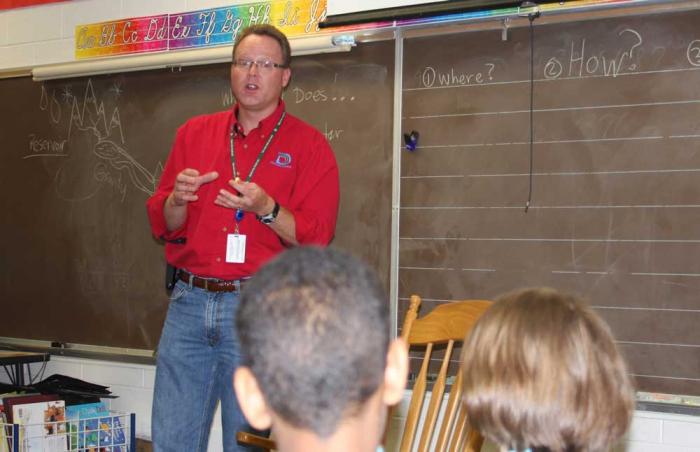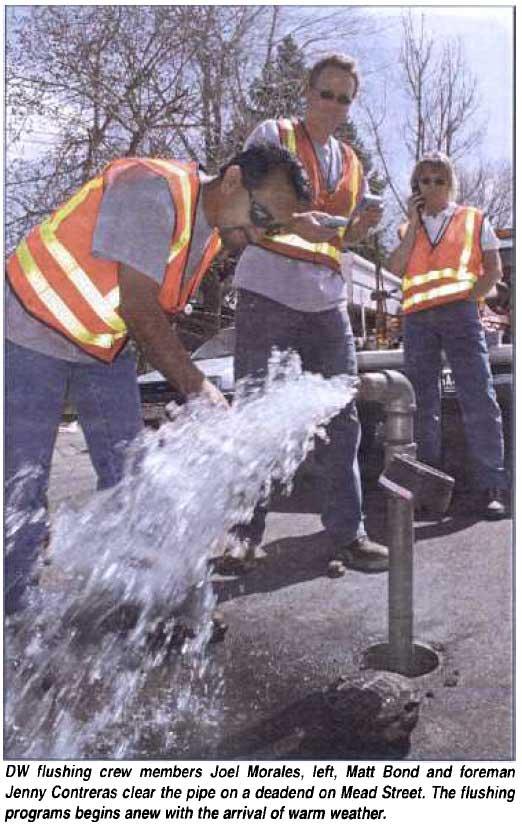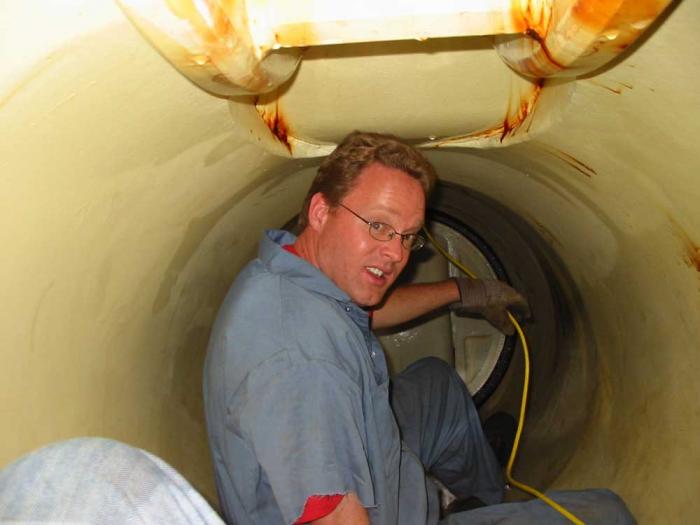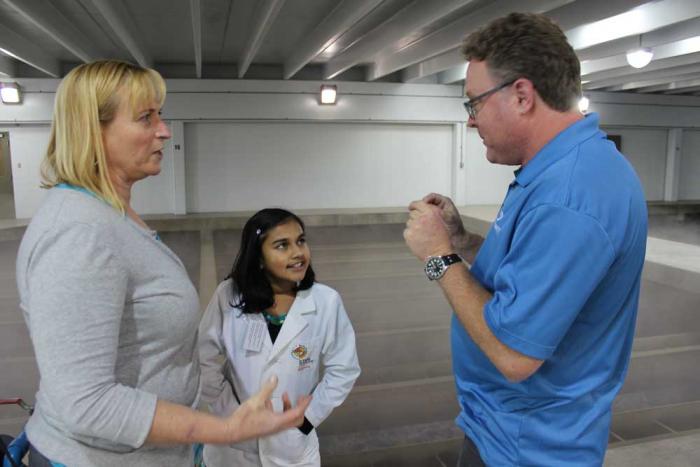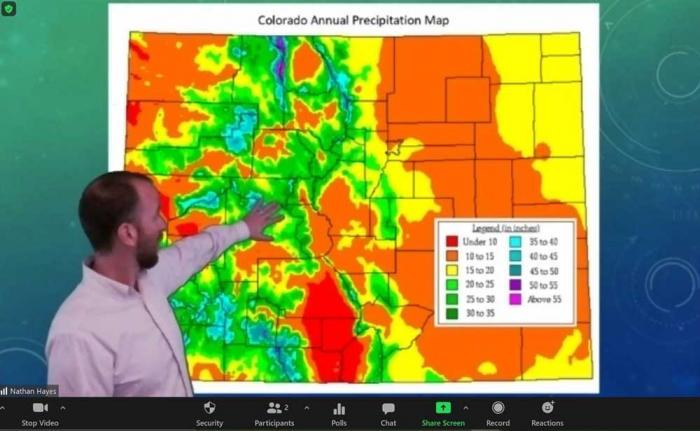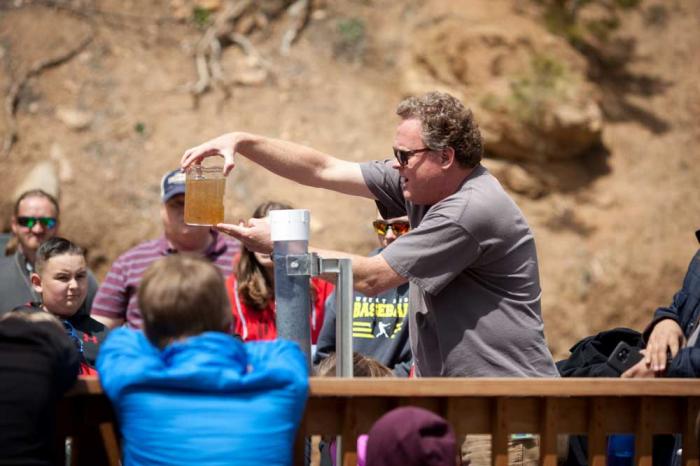Charting a career path from valves to chalkboards
If you would’ve told the teenaged Matt Bond that one day, he’d be teaching thousands of students about watershed protection, conservation and water quality, he never would’ve believed it.
But he took each opportunity that fit — whether it was chipping ice from a valve box or volunteering to write stories for Denver Water’s internal Pipeline magazine — and built an impressive 25-year career at the utility.
“You know you’re making a difference every day,” he said. “That’s the best part about working here.”
Bond, born and raised in Denver, graduated from East High School in the late 1980s before spending a year at Colorado State University.
The choice didn’t seem to fit, and Bond found himself back home in Denver a bit aimless.
He spent a semester in Haiti, working in the same orphanage his younger brother had been adopted from, but, emotionally and physically exhausted, returned to Denver without a clear path forward.
A high school friend encouraged him to apply for a summer laborer job at Denver Water, a better alternative, he thought, than selling T-shirts at the Gap or busing tables at a restaurant.
“I swept a lot of asphalt and handed people a lot of tools,” Bond said. “But I thought, ‘Hey, this is pretty cool.’”
He returned to college, this time to the University of Colorado at Denver, and spent the next few years alternating college classes with temporary jobs in Denver Water’s Water Distribution department, flushing hydrants and responding to pipe breaks.
In 1996, he started as a full-time meter reader, stepping away from college for a bit to take advantage of a steady job.
From there, he moved back the utility’s Water Distribution division and worked in just about every role that involved managing water as it moved through the system.
Bond worked in load control, monitoring and adjusting the movement of water from the treatment plants through the network of pipes that deliver water to customers. He also worked in valve control, learning to operate the larger elements of the distribution network, such as arterial pipes that are 20 inches or more in diameter, that move significant amounts of water across the distribution system.
And he loved all of it.
“I loved that I saw every bit of this city, and there’s a little bit of adrenaline that gets going when you show up on a water main break,” he said.
Learn about the dedicated employees who work day and night, in snowdrifts, laboratories and underground pipes, to ensure the water is delivered, in this video series, the "Journey of Water."
“I knew that every day, when I went home, I had provided a service that was tangible and important. I didn’t know that I needed that in a job until I did it.”
Meanwhile, he got married, had children, and continued to grow and mature at Denver Water. But he still hadn’t completed his degree.
“Talk about carrying an anchor around,” he said.
Bond returned to school, and graduated from UCD two years later, in 2005, with a degree in an area he had chosen because he liked it and seemed to be good at it — writing.
On newsworthy pipe breaks, he worked with Denver Water’s spokeswoman at the time and became interested in communications. He started shadowing colleagues in the utility’s Community Relations group after he got off work, writing stories and learning about communications.
After a particularly exhausting winter night shift spent chipping ice from a valve box, then responding to a pipe break in the middle of a boozy University of Denver student party, Bond began to think seriously about a change in careers.
“I was thankful when a job opened up in Community Relations,” he said.
It was early 2007, and the job was a perfect fit for the easygoing guy who had spent more than a decade working on the distribution system and had a gift for gab.
He met with neighbors about upcoming construction projects and helped educate the public about conservation, water rates and water quality.
And he nurtured a fledgling youth education program, which aims to educate an important — but often overlooked — segment of customers.
“The more I worked on that, the more I realized I liked it,” Bond said.
In 2015, Bond took on youth education full time and helped it grow into the well-known and award-winning program it is today.
“Our job is focusing on a portion of Denver Water’s customer base that doesn’t get much focus, but they’re every bit a customer as anyone else,” Bond said. “We need to teach them to be efficient water users and learn about Colorado water issues so they can be smart water consumers.”
The only way to do that, he said, is by reaching students and teachers where they learn.
“We could buy Denver Water-branded coloring books and send it to school and call it an education, but it’s not,” he said. “The only way to do that and have any impact is to provide teachers with locally relevant information about things they already need to teach.”
And that’s just what Bond and his team of three do.
Read about a field trip taken by a group of Littleton sixth graders to Denver Water’s Strontia Springs Dam, a pretty good day by all accounts.
The team coordinates professional development for teachers, provides an in-depth resource guide to all schools in Denver’s service area, gives classroom presentations and much more.
Then, when COVID-19 hit and schools abruptly closed their doors in spring of 2020, the team developed a virtual education program from scratch, and were making presentations to students when they returned for the fall semester.
“You can learn about the water cycle from a textbook written in Cincinnati, but if you want to explain it in ways that mean something to students in Colorado, you have to connect it to their everyday life,” Bond said.
Though there’s the occasional student who dozes off in the back of the class, many more are captivated by the lessons and bring those ideas back home.
That’s when Bond knows his job is well worth the effort.
Bond remembers visiting a restaurant and having a grandmother approach him, her young granddaughter in tow. The girl had recognized Bond from a presentation he gave to her class.
“She said her granddaughter would not stop talking about ‘The Water Guy’ and all she had learned,” he said. “That’ll make you tear up. That’s when you know you’re making a difference.”
Bond never expected his long-ago summer gig would turn into a fulfilling career spanning more than two decades at the same organization.
“But I’m so glad it did,” he said.
His advice for new hires? Take advantage of unexpected opportunities.
“Learn everything you can about Denver Water,” he said. “You might find you want to do something outside of what you had been hired to do.”


